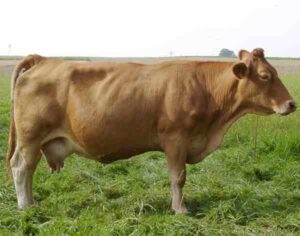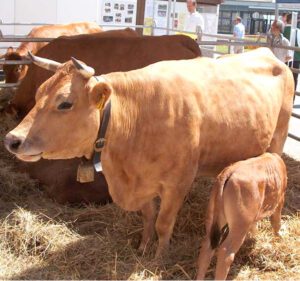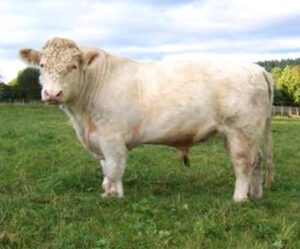The Charolais cattle are a beef cattle breed from the Charolais area surrounding Charolles, in Burgundy, in the eastern France. It is mainly raised for meat production, and previously used as a draught animal.
It has introduced to many countries and may be crossed with other cattle breeds, including the Angus and Hereford cattle. Charbray is a cross-breed with Brahmans and it is recognized as a separate breed in some countries.
In 1946, the breed was introduced to the southern United States from Mexico. Then later it was introduced in the northern New England states from Canada in 1965.
Currently the Charolais cattle are the second-most common cattle breed in France after the Holstein and the most common beef cattle breed of the Limousin.
As of Dec. 31, 2014, there are about 4.22 million head of the breed in France. The breed is also available in many other countries outside it’s native country. Total world population of the breed is estimated at about 730,000.
Currently largest population of the Charolais cattle are reported from the Czech Republic and Mexico. Read some more information about the breed below.
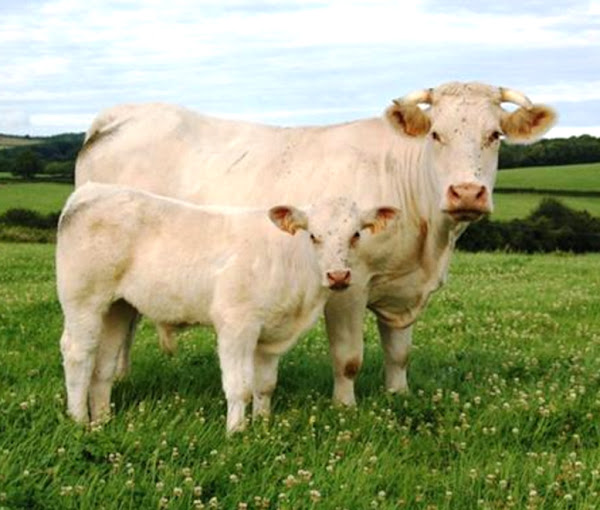
Charolais Cattle Characteristics
The Charolais cattle are large animals and they tend to be large-muscled. They are usually white in color with a pink muzzle and pale hooves. But currently the breed is also available in black and red in color.
They have long body and usually have horns. Their head is short but broad, and have heavily muscled loins and haunches. They maintain a longer, thicker coat of hair in colder winter months, but usually sheds into a sleeker, shorter coat as the weather improves in summer months.
Average live body weight of the mature cows is around 900 kg. And the mature bulls on average weight around 1,100 kg.[1]
Uses
Charolais cattle are a beef cattle breed. They are raised primarily for meat production. They were also used for draught purposes previously.

Special Notes
The Charolais cattle are very hardy and strong animals. They are well known for their good growth rate and uniformity. They are relatively calm in temperament and usually very easy to handle.
But the bulls can sometimes be aggressive. The cows have very good mothering instinct and they are very protective mothers. The Charolais calves are also very hardy and weight quite a lot when born.
Calving process of the Charolais cows is simple and without complications. The breed is noted and praised for their carcass. They produce very high quality meat. They grow very fast and are excellent at fast weight gain.
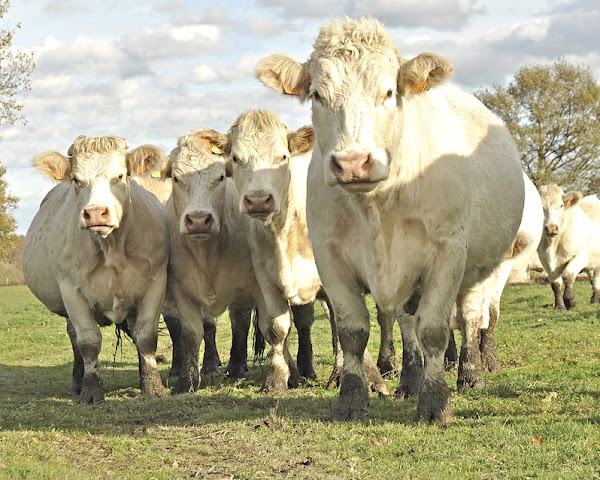
Currently the breed is available throughout the world and popular for very good quality meat production. However, review full breed profile of the Charolais cattle in the following chart.
| Breed Name | Charolais |
| Other Name | None |
| Breed Purpose | Mainly meat, also draught |
| Special Notes | Well adapted to native climates, extremely hardy, strong, easy calving, excellent maternal qualities, good quality meat, good for draught purposes |
| Breed Size | Large |
| Bulls | Around 1,100 kg |
| Cows | Around 900 kg |
| Climate Tolerance | Native climates |
| Coat Color | Mainly white |
| Horned | Yes |
| Milk Yield | Poor |
| Rarity | Common |
| Country/Place of Origin | France |

